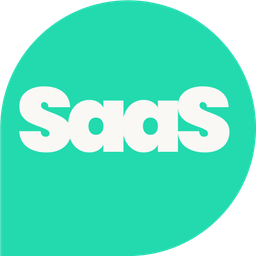A SaaS (Software as a Service) revenue model has become the go-to approach for companies seeking sustainable growth. Instead of charging customers a one-time fee, SaaS companies provide their products through subscriptions. These subscriptions are usually monthly or annual.
This model lets users access the software online. The provider takes care of important tasks like updates, maintenance, and security. For customers, this means lower upfront costs and greater flexibility, while companies benefit from a predictable, recurring revenue stream.
In this article, we will look at why picking the right revenue model is important for your SaaS startup's success. We'll also break down five different types of SaaS revenue model and guide you on how to select the one that best fits your business goals.
Benefits of having a SaaS revenue model for your start-up business
Better scalability
As mentioned, the most important benefit of implementing a SaaS revenue model for a startup is that it creates a predictable and recurring income stream, which leads to steady growth for your business. It reduces the need for large upfront investments from customers, making the product more accessible and easier to scale.
Improved customer relationships
SaaS revenue models also foster long-term customer relationships, as users are more likely to stay engaged with a service they are continually paying for, allowing startups to build a loyal customer base while focusing on improving the product over time.

Better global reach
Also, because SaaS solutions are cloud-based, they can be accessed from anywhere with an internet connection, enabling startups to serve a global audience without geographical limitations or the need for local software installation.
Lower customer acquisition costs
With a recurring revenue model, you can invest more in customer acquisition upfront, knowing that customer lifetime value (LTV) is likely to be high. This then helps balance initial costs and drive your long-term profitability.
Higher value for investors
Investors often favor SaaS startups because of the predictable revenue and long-term customer relationships they offer. This consistent cash flow can lead to higher valuations compared to other business models, making it easier to attract investment or sell the company.
5 types of revenue model for your start up
1. Subscription-based model (recurring revenue)
A steady income is important for a successful SaaS startup. A subscription model is a good way to achieve this. Charging customers a regular fee, like monthly or yearly, gives them ongoing access to your service. This helps build lasting relationships and ensures a steady income for your business.
This revenue model works well for SaaS companies. This includes both B2B and B2C businesses. These companies provide ongoing value and services to their clients. The subscription approach allows you to easily scale your operations and optimize your customer lifetime value (LTV), as your loyal user base steadily grows.
However, it's important to note that the subscription-based model does carry some potential drawbacks. The upfront cost of customer acquisition (CAC) can be relatively high, requiring time to recover through the accumulation of recurring payments.
Nevertheless, the advantages of predictable revenue and the opportunity to build lasting customer bonds often outweigh this initial investment.
2. Freemium model (free + paid tiers)
The freemium revenue model can be a strategic goldmine for SaaS startups looking to amass a sizable user base and gradually convert them into paying customers. The idea is simple. Give away a basic version of your product for free. This will attract users with its main features. Then, show them the premium features they can buy.
It's an approach that works particularly well for SaaS companies serving a wide market with multi-tiered products, like Slack or Dropbox. The free offering lowers the barrier to entry, allowing you to quickly build an audience of potential customers. And here is where the model's key strength lies - the opportunity to achieve high conversion rates as users graduate from the free tier to premium subscriptions.
Of course, maintaining that free user base without an immediate payoff can be costly. You'll need to carefully balance the investment in supporting non-paying customers against the potential lifetime value of those who do convert. It's a delicate balance, but get it right and the freemium model can be a powerful engine for user acquisition and long-term revenue growth.

3. Usage-based model (pay-as-you-go)
For SaaS platforms catering to variable usage patterns, the usage-based revenue model can be a versatile and customer-centric approach. By charging customers based on their actual consumption, be it API calls, storage capacity, or transaction volume, you're able to offer remarkable flexibility that scales seamlessly with their growing and changing needs.
This model is particularly well-suited for cloud-based services, where customers may have fluctuating requirements - think along the lines of an AWS or Twilio. The pay-as-you-go structure makes it far easier for clients to onboard and expand their usage as their business grows, without being shackled to rigid, recurring fees.
The usage-based model aligns your revenue directly with your customer's success. As their consumption increases, so does your bottom line, fostering a symbiotic relationship built on mutual growth. This can be a highly attractive proposition for cost-conscious clients wary of committing to inflexible subscription plans.
However, predicting revenue and forecasting growth becomes markedly more complex when usage patterns dictate the cash flow. The unpredictable nature of the usage-based approach requires careful monitoring and sophisticated pricing strategies to ensure you're not leaving money on the table.
4. Tiered pricing model
The beauty of the tiered pricing model lies in its ability to cater to the diverse needs and budgets of your SaaS customer base - from scrappy small businesses to deep-pocketed enterprises. This allows you to package your product offering in a way that unlocks value for a wide range of users.
This approach is particularly well-suited for SaaS companies like HubSpot and Zendesk, which provide a comprehensive suite of tools catering to a broad spectrum of clients. The tiered model allows you to clearly differentiate the value proposition at each level, making it easier for customers to identify the plan that best aligns with their requirements.
As those customers' needs evolve, the tiered structure provides a seamless path to upsell them to higher-tier offerings. This not only fosters long-term customer retention but also allows you to maximize the lifetime value of each client by unlocking additional revenue streams.
Architecting this tiered structure, you'll need to carefully balance the allocation of features across each pricing level, ensuring that even your most budget-conscious customers feel they're getting their money's worth. Striking that balance between complexity and clarity is a must - after all, you don't want those buying lower tiers to feel disappointed with their package and drive them to seek better alternatives.
But get it right, and the tiered pricing model can be a powerful tool in your SaaS growth arsenal. It allows you to scale seamlessly, unlocking new revenue streams as your customers' needs evolve.
5. Per-user pricing model
The per-user pricing model is the SaaS equivalent of a buffet with a twist - you don't pay for the whole spread, but rather, for how many seats you occupy at the table. It's a strategy that works particularly well for B2B offerings, where multiple stakeholders within an organization require access to the same platform.
With per-user pricing, you can accommodate this growing appetite without breaking the bank. Each new employee who joins the fray translates to a fresh revenue stream, aligning your interests with your customers' expansion.
But while this model provides a clear, intuitive pricing structure and a direct link between user growth and your bottom line, it can also act as a deterrent for larger organizations. The cumulative costs of onboarding an entire workforce might prove prohibitive, driving them to seek out more flexible, all-you-can-eat alternatives.
It's a delicate balance. But it allows you to monetize your platform in a way that feels fair and transparent, while also positioning your offering as a must-have for companies looking to empower their teams.

How to choose which revenue model is right for your business
Choosing the right revenue model for your SaaS startup can be a pivotal decision that shapes the trajectory of your business. Here are a few key factors to consider when determining the best approach:
Customer profile and needs
Take a deep dive into understanding your target customers - are they individual consumers, small-to-medium businesses, or large enterprises? What are their pain points, budgets, and willingness to pay? Models like freemium and tiered pricing may appeal to a wider consumer base, while usage-based and per-user structures tend to resonate more with business clients.
Product maturity and roadmap
Is your SaaS offering a well-established solution or a nascent product still finding its footing? The subscription model works great for proven, ongoing value propositions, while freemium and usage-based approaches can help you rapidly onboard users and iterate on your feature set.
Predictability vs. scalability
Do you value the stability of predictable, recurring revenue streams, or are you prioritizing maximum scalability tied directly to customer growth? Subscription and per-user models offer more predictable cash flow, while freemium and usage-based approaches allow revenue to scale dynamically.
Operational complexity
Consider the internal resources required to manage each revenue model. Subscription and tiered pricing may be more operationally intensive, involving tasks like dunning, churn management, and feature gating. Usage-based and per-user structures, while potentially more volatile, may require less day-to-day overhead.
Market positioning
How do you want your SaaS startup to be perceived in the competitive landscape? Subscription and tiered models can lend an air of permanence and reliability, while freemium and usage-based approaches may be viewed as more innovative and customer-centric.

Final thoughts
All in all, selecting the right SaaS revenue model isn’t a one-size-fits-all situation.
Your best bet? Do your homework.
Take a good look at what makes your product unique, understand your market inside and out, listen to what your customers really want, and consider where your business stands right now.
Dig into these factors and you'll be in a much better position to pick a revenue model that'll help your SaaS business thrive and grow.




